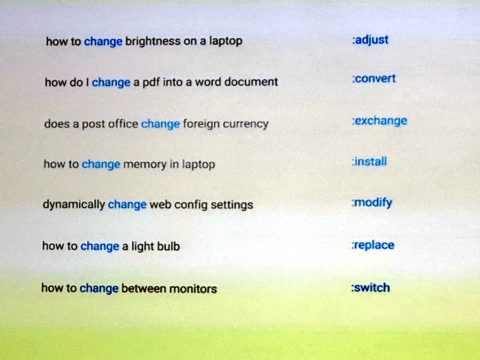
Table of Contents
Google’s Neutral Matching Impact to Your Site
This was caught by SEJ’s lead developer Vahan Petrosyan. Obviously, I can’t repeat a SERP with 30 results. It’s conceivable this is a coincidental glitch, just like the situation when a SERP was spotted with a sum of 14 ads back in January. However, if this happens to be something that appears all the more regularly, it might be something to be thankful for site owners.
With searchers once in a while clicking past the primary page of Google Search, one approach to make them take a gander at a more noteworthy assortment of results is to put more outcomes on page one. Obviously, that is expecting they look over the right to the bottom. Having said that, regardless I wouldn’t rely on this being a standard event.
For more Google topics you may check the article: How google may handle question answering missing facts?

Learn How to Get Ahead with Voice Search Optimization
“Hey Google, How many voice search results come from Featured Snippets?” The answer: About 80%. If it’s not your site, it’s your competitors. Learn more about voice search optimization and how to gain this visibility now at FeaturedSnippet Tool.com.
Gone are the days of matching a keyword to a page and expecting long tail results. Google is changing the game of how keyword and intent matching is performed and many sites are having to play catch up.
On March 12, Google pushed a large core update that shook up the industry.
The core update was a step in the series of changes that Google is working on in order to predict user’s intent rather than exactly matching terms to a query.
What You Should Know About the March 2019 Update
Google has been working on updates to capture more generalized searches, matching to intent and less on exact match keyword to text.
Two months after their latest update and many companies are scrambling to recover. The companies affected most are in the health industry, like WebMD and similar sites that include search results for common ailments while people search their symptoms.
Understanding the neural matching algorithm and what Google is heading toward in search will help explain how your site could have been affected and why.
What Is Google’s Neural Matching Algorithm?
To understand the March 2019 Google update, we have to go back to September 2018 with a Tweet from Danny Sullivan explaining how Google is:
- Working on understanding “(h)ow people search is often different from the information that people write solutions about”.
- Matching the user intent best to the content provided on the internet.
This is a look back at a big change in search but which continues to be important: understanding synonyms. How people search is often different from information that people write solutions about.
Google has been guiding webmasters on optimizing for their Discover results – not only contributing to insight into user intent but taking it a step further with predicting what users are looking for before they perform a search.
With this new shift in matching results and predicting users’ intent and interests, how are search engine optimizers supposed to properly optimize a website and its content?
Understanding Machine Learning for Neural Matching
Google uses machine learning as users search more complex questions or scenarios and click through to find the answer they are looking for.
The customer’s journey while shopping starts with an idea, followed by research and finishing with the purchase decision.
Sparking users’ interest with display ads, Facebook Ads, Social Media, paid search ads or optimized content in a blog or landing page that targets their interests when they aren’t familiar with your brand or product are all ways to begin your engagement.
Follow up with materials optimized for SEO that support research around your brand and/or product with educational pieces in a blog or in PR (news publications, podcasts, and even videos of conferences or trade show presentations) while including reviews from reputable sources outside of your own company.
The more you can provide your audience with information outside of your website, the more they will become familiar with your brand and build trust.
In the end, optimizing products on your website for those searches when the user is ready to make a purchase will complete the journey.
What Are ‘Zoomies’?
During the research phase of your customer’s journey is where the Neural Matching comes into play the most. A user could be trying to understand a complex issue and may not know you have a product that resolves that issue.
Let’s say, for example, your company sells a product that entertains a dog while left home alone as their owner is at work 5 days a week.
Dogs that are not regularly exercised get what is called the “Zoomies” as the tuck their hind legs under themselves and “zoom” around the house or backyard with a sudden burst of energy.
Block fraudulent clicks on your Google Ads.
Automatically protect your ads from competitors, bots, click farms and other forms of click fraud. Simple setup. Start your free trial today.
A quick search for “my dog runs around as crazy” brings back the answer for “Zoomies” even though the user never used the word “zoomies” or know what it means.
Providing this answer on a blog post or product description will draw users in with educating them about your product pushing them through the research phase and into a purchase quickly.
This method of searching can be most common among medical terminology and diagnosis – diagnosing a funny sound or behavior in a car and many other behavioral or questionable issues you might find with cats and dogs.
The Difference Between Machine Learning & Artificial Intelligence
Both machine learning and artificial intelligence can often be misconstrued as one and the same, yet they could not be more different from one another.
Machine learning is an algorithm that is programmed to learn based on signals where artificial intelligence is programmed to be more human-like and respond intelligently.
Both could end in the same place, depending on the use case, but take different journeys in getting there.
Data Learns
Think of Data from “Star Trek the Next Generation”. Even if you aren’t a Star Trek fan you can picture an android built to act and make decisions as a human would.
Scenarios are programmed into the android’s database with required outcomes.
The android can learn from reactions or results from scenarios and learn how to react in the future if a similar situation arises, but isn’t an exact programmed scenario.
Those learnings are exactly what machine learning is.
Examples of Google using machine learning in their neural matching algorithm is applied to signals such as a user clicking a result and coming back to click another result within seconds.
Get a large number of users clicking the same link only to come back to try another result will tell Google that the result isn’t what is expected. The second result that is clicked will then begin to rank above.
|
What Can You Do to Optimize for Neural Matching?
SEO professionals will often tell you that you can’t do much to optimize for Google’s neural matching algorithm other than writing good quality content for your users.
Alternatively, they will tell you to just add synonyms, however, it’s not about just adding synonyms or adjectives to your content.
As mentioned before, it’s best to understand the problem you are trying to solve with your product or service and the journey your user will go through in order to make a decision to purchase.
Assisted content that is interlinked on and off the website will help users during their purchase process, engages your user, provides more information, and applies to the machine learning algorithm
Google Displays an Unusual SERP With 30 Results

Google was recently spotted displaying a strange search results page with 30 organic listings.
Actually, it’s more like 32 listings if you count the featured snippet and knowledge graph box.
Here’s a screenshot of the entire SERP:

This was captured by SEJ’s lead developer Vahan Petrosyan. Unsurprisingly, I cannot replicate a SERP with 30 results. It’s likely that this is a one-off glitch, as was the case when a SERP was spotted with a total of 14 ads back in January. However, if this happens to be something that shows up more often, it may be a good thing for site owners. With searchers rarely clicking past the first page of Google Search, one way to get them looking at a greater variety of results is to put more results on page one. Of course, that’s assuming they scroll all the way to the bottom. Having said that, I still wouldn’t count on this being a regular occurrence.
via:https://www.searchenginejournal.com/google-machine-learning-neural-matching/304563/




What do you think?